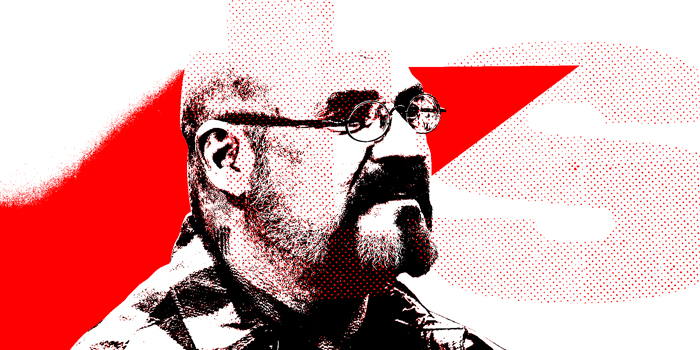
It's difficult to overemphasize the essential nature of the shoulders in benching. After all, they connect the power of the pectorals to the triceps, then ultimately the bar via the least stable joint in the human body. It is the price that evolution has paid for extreme mobility.
That said, we intuitively understand that we must strengthen the shoulder muscles to a high degree. This leads to a problem.
If you bench heavy, when do you perform heavy shoulder presses?
On the same training day?
Not likely. There isn't enough energy to do both on the same day. If you do shoulders first, your benching will certainly suffer. And vice versa. You'll get short-changed.
So, how about in a few days?
Well, that is plausible if you are not very strong yet. You don't need too much recovery if you are lifting lighter weights. But as your years of training turn you into a bench monster, you can barely recover in a week's time. When do heavy shoulders fit into that?
RECENT: Pre-Workout Ritual Instructions
They don't. If you insist that they do, you will inevitably begin a downward spiral into overtraining. I know, because I know a guy. You cannot perform TWO heavy presses in a week. At least not past a certain strength level. Those were the good old days when you were a kitten. You're a big dog now, and that simply won't work anymore.
So, what's the answer? My answer was to train my shoulders specifically in a predetermined offseason. That made the most sense to me. Another acceptable answer is to bench one week, then do a heavy shoulder press the next. By alternating your presses, you can avoid overtraining. But I could not sacrifice my “groove” on the bench press. Perhaps I was overly enamored of the thing. I may have chosen differently if I knew then…
But my favorite solution was taking an offseason. It allows for some recovery and mentally lets the valve blow steam on all the pressure to perform on the bench. I liked it.
So here are some exercises that accompanied my shoulder presses. I have absolute faith in them. I NEVER had a shoulder injury. Maybe it was just luck. Or maybe it was my commitment to preparedness and deep shoulder integrity and strength. Who knows? But having no shoulder injuries is far more favorable than having some shoulder injuries. So you should do ALL YOU CAN. Should you do these, I hope you’re lucky too!
Rotator Cuff Front Raise
The first movement is a front raise that is not a front raise. Let me explain. A typical front raise is for the deltoids. This one is for the rotator cuff—specifically, the external rotators. I'll describe the Rotator Cuff Front Raise, then tell you why I did it.
1. Sit on the end of the bench and take your competition grip on an empty straight bar (45 pounds may be too much weight at the beginning, so perhaps a lighter bar from somewhere in the gym) and place it on your knees with your arms straight.
2. Turn your elbows out to your sides.
3. Raise the bar until you can see under it. In other words, raise the bar over your eyes. Then lower it back down to your knees.
4. Here's the secret: Try to twist the bar up. Don't lift it up with your delts. Try to feel it coming from deep in your shoulder, even from BEHIND your shoulder. The arms stay straight (maybe a slight bend), and you really IGNORE the delts. Focus on the deeper muscles that you never see, but you can feel. You twist (rotate) the bar up instead of just raising it. It is much harder to write about in words than it is to feel it happen. If you don’t feel something DEEP, you are missing it. If you feel something deep, try to GO DEEPER!
The shoulder joint actually rotates the arm around it in an arc. If you were to watch this movement directly from the side, you could watch the hands move circularly from your knees to above your eyes. It is this “rotary” or “circular” motion you want to shoot for. NOT UP AND DOWN! TWIST IT!
Here is why it is important, especially if you are a geared lifter:
By strengthening your shoulders in this “groove,” you can ride the bar path lower towards your navel. This takes stress off of the shoulder joint in spades, especially if you have a bench shirt on. You must also work very hard to get a good arch for this to be beneficial, but without delving into a mechanics article, let's agree that strong rotator cuff muscles are a good thing! They certainly can't hurt! You can ride the bar low and keep it from “falling” onto your belly! That twisting strength holds you firm.
WATCH: JM Blakley's Secret Tricep Exercise
This exercise can be modified through the weeks by starting in a straightened seated position then using an incline bench at progressively lower positions until you are doing the same twist/raise from a flat bench position. This will DIRECTLY strengthen your shoulders in the actual position that you bench from.
Elbows Front Press with Dumbbells
Another fantastic offseason exercise is the Elbows Front Press with Dumbbells. You can use a machine if your gym happens to have one that is the right size for you and lines up with your shoulder width. But dumbbells never disappoint.
1. Sit straight up with a back support and hold the dumbbells at your shoulders in a parallel grip. That means NOT like you have a straight bar, but with each dumbbell handle in parallel to each other (your palms face in toward your head).
2. Perform the press by sweeping your elbows out in front of you and then up to the ceiling. They also follow an arc.
3. On the return from lockout, you slide the elbows back behind your sides. Keep the elbows in close, almost scraping them past your flanks on the way down.
This allows the front deltoids to fully stretch, and the dumbbells end up below the top of your shoulders. It is extra deep. The dumbbells will be in front of you, not over you, as in a normal press. Sort of like you finished a hammer curl and went too high.
4. “Scoop” your elbows under the dumbbells and press forward before you press upward.
As stated, it’s an arc. The dumbbells themselves get WAY out in front of you. By pushing them out from the support of the shoulder joint (in a normal press the dumbbells stay directly over the joint) you create great torque on the shoulder. This allows for tons of muscle work without the normal heavy loads of regular presses. That, in turn, will promote recovery. I can never shut up about recovery. At the top of the motion, the bells do end up over the shoulders. But there's more!
This extra stretch and range will test you if you have not done real full range presses much. You will have great strength in the range of motion that you have regularly trained, while the deep and extra stretchy parts will have you feeling like a kitten is holding the weight. The point is to even out this difference somewhat. Don't short-stroke the movement! You might as well just do military presses! Go deep and move circularly. The temptation to put the motion right where you are familiar with is great. But be disciplined and try to go the hard route.
5. Finally, at the top of the movement, instead of just supporting the dumbbells with the bones of the arm, hold them straight and flex the shoulder muscles BACKWARDS behind you! This finishes the arc movement. Do a big isometric.
At the start you press forward, then in the middle you press upwards, and you finish by flexing backward. It is quite exhausting. There is no place to rest! Full range for full development and strength. The results will speak for themselves.
You may also experiment with the incline of the bench here as well. As you lower the angle of the chair this time though, it will involve more and more chest. You don't want to go too far. Remember this is for shoulders!
One absolutely essential facet of the exercise, the way I prescribe it, is to PURPOSEFULLY SHUT OFF YOUR TRICEPS! I can not stress this enough. You must lift from the TOP of your humerus, not from underneath it. That means activating the front delts and shutting down the triceps. This takes miles and miles of practice, but it must be done or you only get regular results. If you want what I promise, you have to kill the tris and focus on the delts. Not easy, but worth it. It is as if you are operating a crane and it is attached to the front of your arm (on top). The plain truth is, that is EXACTLY where the front delt inserts! Instead of pressing or pushing, think of “lifting” from overhead. Pull the arm up from on top. Don't push from under it. This may help you to negate triceps drive. PULL. No chest either!
Each of these movements requires you to de-activate the synergistic muscles. This is not spoken of nearly enough. I talk about it all the time. The body is always trying to help you by automatically using the most efficient combination of muscles and angles that it knows. It will always try to use several muscles rather than just one single muscle if it can. It wants to spread the work around. Especially when it's heavy! That makes sense. But that's not what you want. If you fail to concentrate, then the default is always to use other muscles to help. So for these movements, it is not nearly enough to just perform the movement strictly, you must attempt to disengage your helping muscles.
Also, NO MOMENTUM! You move slowly and strictly. Don't throw or cheat.
These are my two favorite front delt offseason moves. There is no harm in sticking with good ole’ military presses. But that move is so similar to the bench press, it didn't give me that “offseason” feeling! You could also use regular front raises or any variation thereof. But remember, you must avoid overtraining. It has been my experience that one can only do TWO movements at a high enough intensity to grow and still be able to recover. You can do dozens of movements if they are at Mickey Mouse weight. But nobody gets stronger lifting light.
If you manage your recovery, you should be able to do the shoulder work at the same frequency that you did your benching. I said IF...
I have other movements that I have employed for shoulder development and strength. But these two are probably new to you. The novelty alone might spark your training. I apologize if the descriptions of the moves were not perfectly clear. But you can FEEL your way through them. If you keep feeling for it, it will present itself to you in a productive way. It does not have to be perfect to be effective...remember I said that!
Now get busy protecting your shoulders!











4 Comments